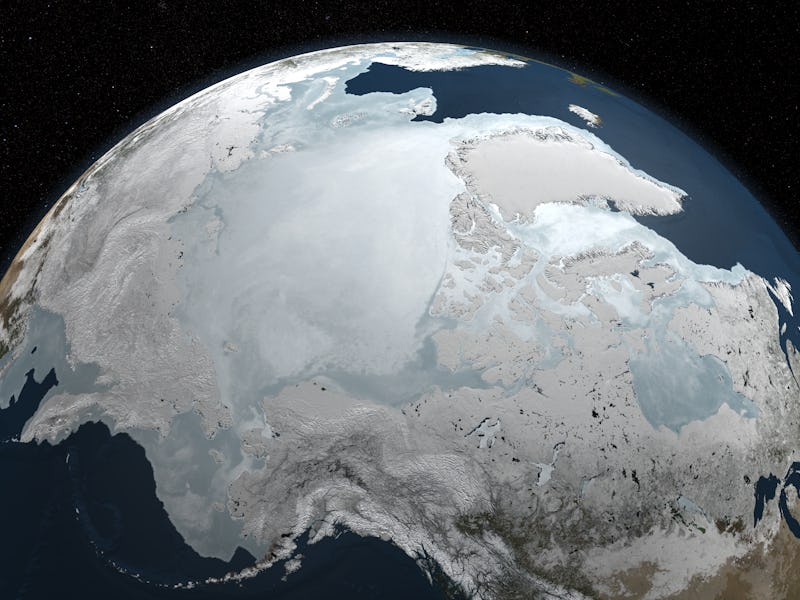What Is Arctic Engineering? Protecting Infrastructure From Climate Change
Hannele Zubeck is an expert in frozen ground engineering.

Temperatures in the Arctic are rising twice as fast as any other place on the planet. That is the challenge currently facing arctic engineers, the frozen ground specialists charged with maintaining and expanding regional infrastructure. It’s a big challenge for a young discipline. Arctic engineering has only been recognized as its own discipline since the creation of the Trans-Alaska Pipeline System in the 1970s. Now, the big thaw threatens roads, bridges, and buildings. Who ya gonna call?
Hannele Zubeck, professor of engineering at the University of Alaska, Anchorage, would be a pretty good person to start with. She has been working in cold regions engineering since 1985 and is Vice President of the International Association for Cold Regions Development Studies. She’s passionate about teaching the next generation of arctic engineers, who will be tasked with preserving and building in one of the most rapidly changing regions in the world.
With drilling in the Arctic currently on hold and the Wilson Center estimating that $100 billion could be invested in the Arctic over the next decade, now seems like as good a time as any to shine a light on the engineering being done at the world’s chilly extremes. Inverse spoke to Zubeck about her work and the future of her field.
Part of the Trans-Alaska Pipeline system.
Why is it important that arctic engineering be such a specialized field? What are the particular challenges that arctic engineers experience?
Arctic engineering is a graduate study that expands engineer’s knowledge, so that their designs do not fail in Arctic conditions. Regular engineering education does not cover the issues that we face in cold regions. The effects of ground freezing, snow, and ice need to be considered when engineering designs. Additionally, cold regions come with other challenges, such as a short summer construction season, long distances between habitations, and lack of road access — just to name a few.
In what particular contexts could an arctic engineer expect to work?
Any project that is located in cold regions. Cold region facilities and communities need the same kinds of features as in other regions, but again, careful planning needs to be conducted so that the facilities and other engineering products do not fail due to poor design, poor materials, poor construction, or maintenance or operation.
How does climate change affect arctic engineering?
All facilities in permafrost areas are founded in the permafrost — the loads are transferred to the foundation to the rigid frozen ground. More often than not, this frozen ground includes ground ice. When the ground ice warms up during a warming climate trend, its stability decreases and the facilities settle — or in the worst scenario fail due to the melting of the ground ice. Even if climate trends start to get colder, the damage is done.
Then, due to increased storms and melting glaciers, bluff erosion becomes a serious problem and threatens our coastal communities. Drainage systems are not designed to handle increased precipitation and flooding results. So, there is a lot of work to do to update the data that is required for the designs, as well as retrofit existing facilities and design new ones.
Unburied cables above permafrost in Greenland.
What do you enjoy most about this line of work?
I enjoy working with other engineers — especially future engineers, our undergraduate students. I also enjoy working with my colleagues around the circumpolar North. Being born and raised in Finland, another cold region, this niche of cold engineering fits me well.
Right now I’m answering these questions in Incheon, South Korea where I am going to give a keynote lecture on Engineering Considerations for Cold Regions Development at the 11th International Symposium on Cold Regions Development.
What would you say is the future of arctic engineering? Does it really come down to knowing how to do the work, while being mindful of the effects of climate change?
The aim is to do sustainable development, where economic feasibility is not enough. All projects need to be feasible, but also socio-culturally and environmentally conscious. All stakeholders need to be involved — from the early decision making to operation, especially the local people, who are indigenous in many Arctic regions.